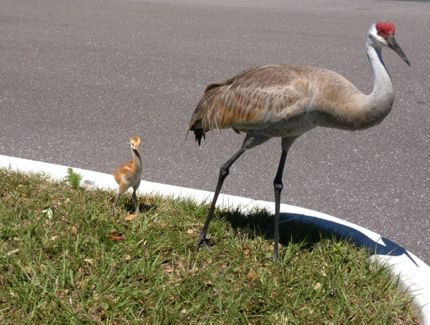
The Sandpiper
by Robert Peterson
She was six years old when I first met her on the beach near where I live.
I drive to this beach, a distance of three or four miles, whenever the world begins to close in on me. She was building a sand castle or something and looked up, her eyes as blue as the sea.
“Hello,” she said.
I answered with a nod, not really in the mood to bother with a small child.
“I’m building,” she said.
“I see that. What is it?” I asked, not really caring.
“Oh, I don’t know, I just like the feel of sand.”
That sounds good, I thought, and slipped off my shoes.
A sandpiper glided by.
“That’s a joy,” the child said.
“It’s a what?”
“It’s a joy. My mama says sandpipers come to bring us joy.”
The bird went gliding down the beach. Good-bye joy, I muttered to myself, hello pain, and turned to walk on. I was depressed, my life seemed completely out of balance.
“What’s your name?” She wouldn’t give up.
“Robert,” I answered. “I’m Robert Peterson.”
“Mine’s Wendy… I’m six.”
“Hi, Wendy.”
She giggled. “You’re funny,” she said.
In spite of my gloom, I laughed too and walked on.
Her musical giggle followed me.
“Come again, Mr.. P,” she called. “We’ll have another happy day.”
The next few days consisted of a group of unruly Boy Scouts, PTA meetings, and an ailing mother. The sun was shining one morning as I took my hands out of the dishwater. I need a sandpiper, I said to myself, gathering up my coat.
The ever-changing balm of the seashore awaited me.. The breeze was chilly but I strode along, trying to recapture the serenity I needed.
“Hello, Mr. P,” she said. “Do you want to play?”
“What did you have in mind?” I asked, with a twinge of annoyance.
“I don’t know. You say.”
“How about charades?” I asked sarcastically.
The tinkling laughter burst forth again. “I don’t know what that is.”
“Then let’s just walk.”
Looking at her, I noticed the delicate fairness of her face.
“Where do you live?” I asked.
“Over there.” She pointed toward a row of summer cottages.
Strange, I thought, in winter.
“Where do you go to school?”
“I don’t go to school. Mommy says we’re on vacation.”
She chattered little girl talk as we strolled up the beach, but my mind was on other things. When I left for home, Wendy said it had been a happy day. Feeling surprisingly better, I smiled at her and agreed.
Three weeks later, I rushed to my beach in a state of near panic. I was in no mood to even greet Wendy. I thought I saw her mother on the porch and felt like demanding she keep her child at home.
“Look, if you don’t mind,” I said crossly when Wendy caught up with me, “I’d rather be alone today.” She seemed unusually pale and out of breath.
“Why?” she asked.
I turned to her and shouted, “Because my mother died!” and thought, My God, why was I saying this to a little child?
“Oh,” she said quietly, “then this is a bad day.”
“Yes,” I said, “and yesterday and the day before and — oh, go away!”
“Did it hurt?” she inquired.
“Did what hurt?” I was exasperated with her, with myself.
“When she died?”
“Of course it hurt!” I snapped, misunderstanding. Wrapped up in myself, I strode off.
A month or so after that, when I next went to the beach, she wasn’t there. Feeling guilty, ashamed, and admitting to myself I missed her, I went up to the cottage after my walk and knocked at the door. A drawn looking young woman with honey-colored hair opened the door.
“Hello,” I said, “I’m Robert Peterson. I missed your little girl today and wondered where she was.”
“Oh yes, Mr. Peterson, please come in. Wendy spoke of you so much. I’m afraid I allowed her to bother you. If she was a nuisance, please, accept my apologies.”
“Not at all! she’s a delightful child.” I said, suddenly realizing that I meant what I had just said.
“Wendy died last week, Mr. Peterson. She had leukemia. Maybe she didn’t tell you.”
Struck dumb, I groped for a chair. I had to catch my breath.
“She loved this beach, so when she asked to come, we couldn’t say no. She seemed so much better here and had a lot of what she called happy days. But the last few weeks, she declined rapidly…” Her voice faltered, “She left something for you, if only I can find it. Could you wait a moment while I look?”
I nodded stupidly, my mind racing for something to say to this lovely young woman. She handed me a smeared envelope with “MR. P” printed in bold childish letters.. Inside was a drawing in bright crayon hues — a yellow beach, a blue sea, and a brown bird. Underneath was carefully printed:
A SANDPIPER TO BRING YOU JOY.
Tears welled up in my eyes, and a heart that had almost forgotten to love opened wide. I took Wendy’s mother in my arms.
“I’m so sorry, I’m so sorry, I’m so sorry,” I uttered over and over, and we wept together. The precious little picture is framed now and hangs in my study. Six words — one for each year of her life — that speak to me of harmony, courage, and undemanding love.
A gift from a child with sea blue eyes and hair the color of sand. . .who taught me the gift of love.
NOTE: This is a true story sent out by Robert Peterson. It happened over 20 years ago and the incident changed his life forever. It serves as a reminder to all of us that we need to take time to enjoy living and life and each other. The price of hating other human beings is loving oneself less.
Life is so complicated, the hustle and bustle of everyday traumas can make us lose focus about what is truly important or what is only a momentary setback or crisis..
This week, be sure to give your loved ones an extra hug, and by all means, take a moment… even if it is only ten seconds, to stop and smell the roses.
This comes from someone’s heart, and is read by many and now I share it with you..
May God Bless everyone who receives this! There are NO coincidences!
Everything that happens to us happens for a reason. Never brush aside anyone as insignificant. Who knows what they can teach us?
I wish for you, a sandpiper.























































